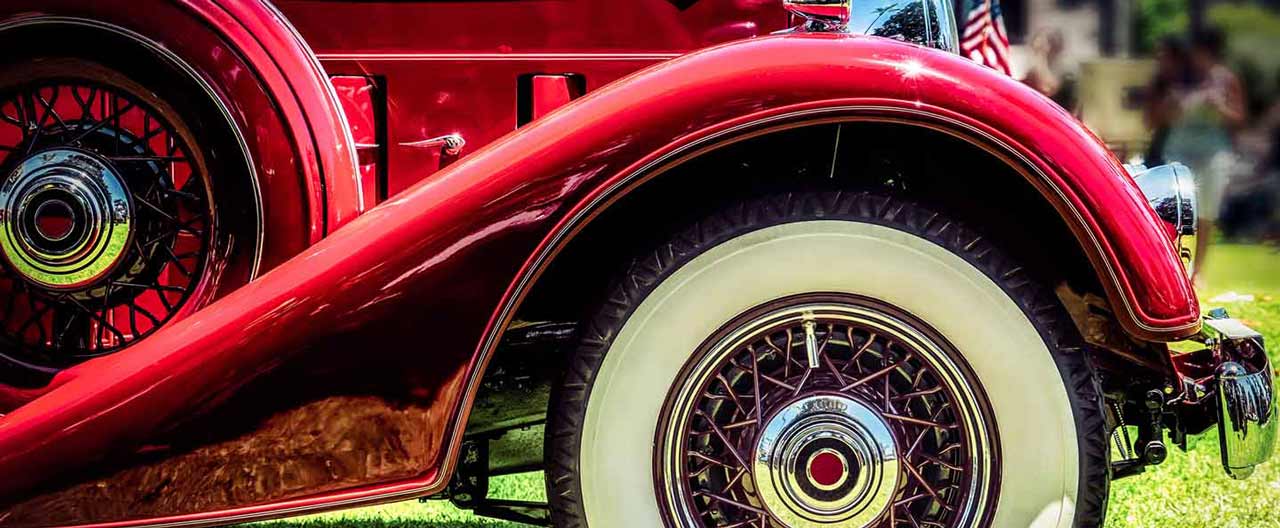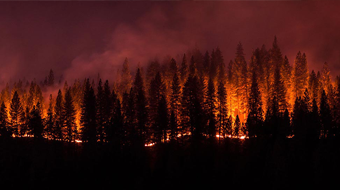- Individuals & Families
- Businesses
- Brokers

With winter on its way out, you may be ready for some spring cleaning.

Make sure you protect your classic cars from damage or additional wear and tear.

Keep your important papers and small valuables away from burglars, fire or natural disaster.

For over a hundred years, we’ve offered unparalleled stability and protection for small boats, yachts, luxury mega-yachts, and more.

Here are some things you can do to assist firefighters and minimize the damage to your home.

At their worst, disputes between professional service firms and their clients can lead to costly lawsuits.
You can't stop the spread of wildfire, but you can limit its damages.
How to Prepare Before a Wildfire
You may feel helpless against an encroaching wildfire, but rest assured that there are plenty of things you can do to limit its damage. Here are some steps to follow if there is the threat of a wildfire in your area.
- Install fire-resistant window treatments, smoke detectors and fire extinguishers throughout your home.
- Keep a garden hose that is long enough to reach the house and structures on the property as well tools such as a ladder, shovel, rake, axe and water bucket.
- Install a back-up generator in case electrical power is shut off.
- Keep your property free of leaves, needles, hanging branches and other debris (this includes the gutters and roof).
- Maintain a minimum of 5 meters between tree crowns and trim tree limbs to 5 meters off the ground (or 1/3 total crown height, whichever is less). Thin and separate shrubs by a distance of at least twice their height. Remove any dead trees from your property.
- Move firewood and flammable plants at least 10 meters away from your home.
- Maintain at least 30 meters of adequately watered space on level ground and 60 meters on sloped terrain around your house.
- Keep your grass short.
- Clear a 3-meter area around propane tanks or barbecue area.
- Store valuable documents in a fire-resistant safe or an off-premise location.
- Post your house address so that it is readily visible from the street.
- Clear driveways as much as you can to accommodate large fire equipment. Make sure there is no flammable vegetation within 3 meters on both sides of the driveway and there are no overhanging obstructions within 5 meters.
- Have an emergency evacuation plan in place for your family.
What to Keep in Mind for New Construction
If you are building a new home or addition in a wildfire-prone area or rebuilding after damage from a wildfire, understand that choices made during the construction process can go a long way in helping to protect your home and property from extensive damage. Here are some things to consider:
- Use fire-resistant roofing materials such as tile, composition shingles, metal or copper.
- Screen all vent openings with 1/4 inch or smaller noncorrosive metal mesh.
- Finish exterior walls with noncombustible siding materials such as stucco or masonry.
- Box in eaves.
- Enclose area under raised decks to prevent embers from blowing underneath, and keep area clear of flammable items.
- Construct decks of nonflammable materials.
- Use dual-pane or tempered glass windows with metal/aluminum frames.
What to Do During a Wildfire
Your number one concern during a wildfire should be to keep yourself and your family safe. Everything else can be replaced. If conditions become too dangerous, you should immediately evacuate your home. Your Chubb Homeowners policy will respond to any covered loss in these cases. If you still have time to act and the fires have not yet threated your safety, here are some things you can do to mitigate the damage:
- Turn on a light in each room to increase the visibility of your home in heavy smoke.
- Remove lightweight and/or non-fire resistant window treatments and materials from around windows. Close windows, vents, doors and noncombustible coverings.
- Attach precut plywood panels to cover exteriors of windows and glass doors.
- Open the fireplace damper and close fireplace screens.
- Seal attic and ground vents with precut plywood or commercial seals.
- Set up a portable gasoline-powered pump.
- Shut off propane at the tank or natural gas at the meter.
- Turn off all pilot lights.
- Connect the garden hose to outside taps.
- Place lawn sprinklers on the roof and near above-ground fuel tanks.
- Wet the roof and shrubs within 5 meters of your home.
- Prop a ladder against the house so firefighters have easy access to the roof.
- Place combustible patio furniture in the house or garage.
- Move all flammable furniture to the center of the home away from windows and glass doors.
- Continually check the roof and attic for embers, smoke or fire.
- Do not waste water or jeopardize water pressure until burning embers fall around your home.
What to Do After a Wildfire
Once the fire is completely out and authorities say it is safe to return to your home, follow these steps to begin the cleanup process. First, be sure to inspect the roof and exterior from a distance for any sparks or embers as they could reignite.
- Wear sturdy shoes and long pants and be on the lookout for signs of heat, smoke or sparks throughout your home—including the attic—for several hours.
- Have a professional electrician check your household wiring before the current is turned back on.
- Take precautions while cleaning your property. Wear protective glasses or goggles to protect your eyes and wear gloves.
- Discard food, beverages and medicines that have been exposed to heat, smoke or soot.
- If you have a safe or strongbox, do not try to open it right away. It can hold intense heat for several hours.
- Watch for ash pits and mark them for safety. Ash pits are holes full of hot ashes, created by burned trees and stumps.
- Avoid damaged or fallen trees, power poles or lines and downed wires. If trees and power poles are burned, they may be unstable.
- If you’re a Chubb client and suffered damage due to a wildfire, click here to begin the claims process.
Visit the Catastrophe Centre
Just because an event is catastrophic doesn't mean its effects have to be.
